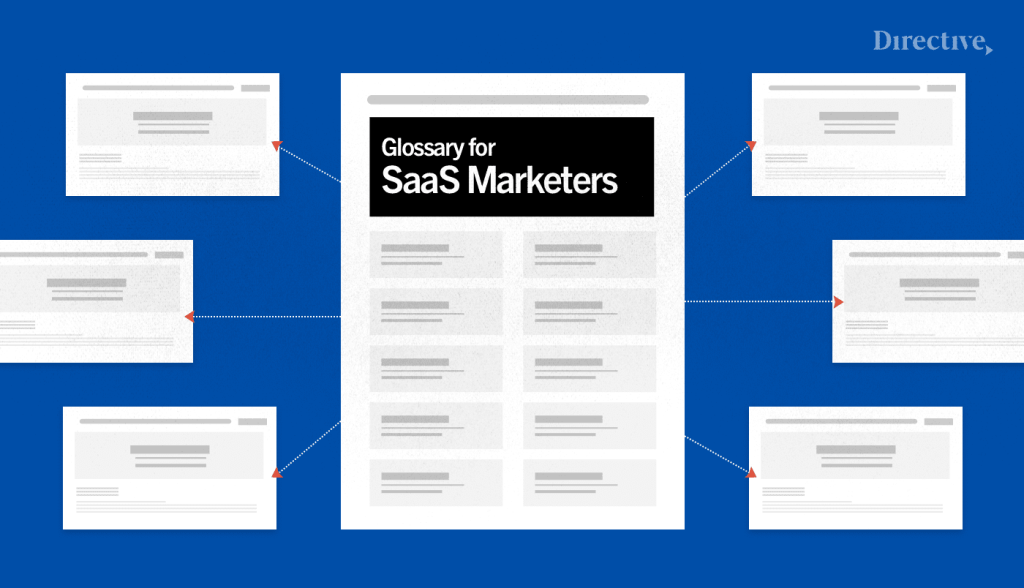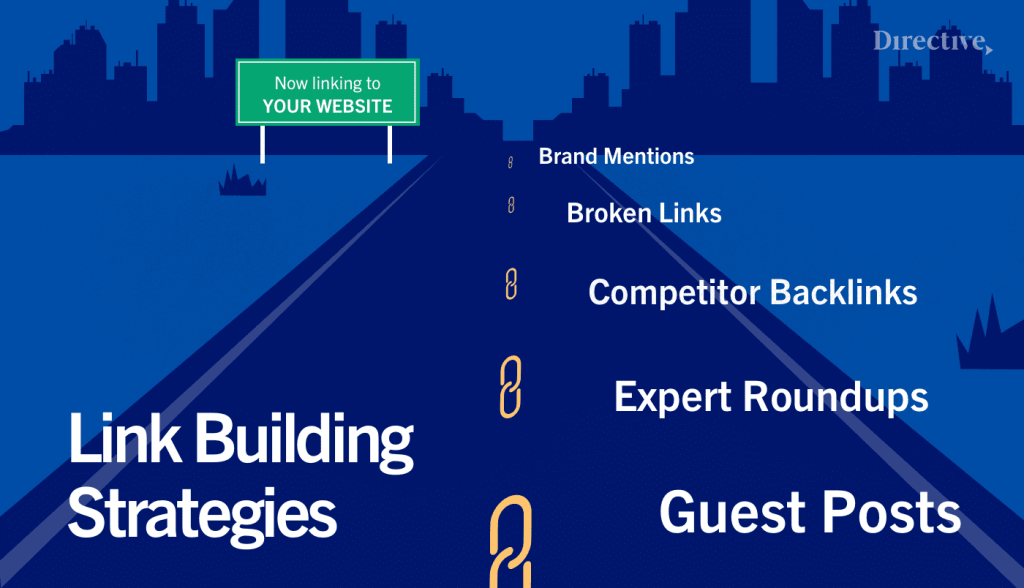Link building strategies have been around as long as Google has been around. However, like most things in SEO, they have undergone massive change and have been the subject of more than one Google algorithm update in an attempt to level the playing field and create the optimal user experience. There are many ways to begin your link building journey, which is why we’ve compiled seven actionable white-hat strategies specifically designed for link building for SaaS.
What You Need to Know About Link Building
So what is link building anyways? Link building can be defined as any effort to gain external links, also known as backlinks, to your website. The number of backlinks pointing back to your website from unique domains directly influences the Google searching ranking algorithm resulting in an influence on your SERP rankings.

White-Hat versus Black-Hat
In the early days of link building, Google only considered the quantity of backlinks for a site. This caused many to deploy black-hat strategies to increase the number of backlinks for their site by purchasing backlinks and private blog networks (PBNs). And it worked, for a while.
However, as Google has evolved and become smarter, quantity is less important than quality. Black-hat techniques are no longer accepted by Google and can even result in manual actions being taken against your site and de-indexing. This is where white-hat strategies come in. Building intentional links based on the quality of the backlinks being sought after. The quality determination of a link is based on a number of factors such as relevance, quality of the source, and the context of the backlink.
Creating Linkable Assets
This evolution of link building has fundamentally changed how you should approach it. Gone are the days of creating content and hoping someone may want to link to it. Now, you must build intentional, shareable content designed to provide value to your users. Think of it like a press release, you wouldn’t distribute a random piece of content on your site and call it a press release. Similarly, you want to craft content around information that people will want to share. There are several ways to create this type of content, but we have found the following are most successful when it comes to link building for SaaS.
Proprietary Data
Proprietary data is data that your team has aggregated or compiled to create unique insights and data about your specific niche. When you create shareable data and insights, you become the source that people want to link back to.
There are a few ways you can gather this type of data including surveys, customer interviews, and aggregating your own data and reports. Once you have this data compiled you want to decide on the best way to share this data. That could include an infographic, an interactive tool, a trend report, or any other visually engaging type of content. For example, Directive created our own proprietary data and made it available through our Pulse dashboard.
Link Roundups
This strategy focuses on relationship building and curating content that is relevant to your niche while showcasing your expertise. Link roundups are fairly manual but, when done correctly, they work.
There’s two main ways to develop roundup content. The first is to curate content specifically for your niche during a specified amount of time. An example of this could be, “Top 10 SaaS Marketing Blogs for 2022”.
The second type is an expert roundup. This is when the content you are curating comes directly from an expert in your niche, such as a quote, advice, or an interview. An example of this could be, “Lead Generation Strategies from 8 Directors of Demand Generation”. In both examples, they are specific to what the content is about and the niche the content is targeting.
Resource Hubs
This type of content creation has the same spirit of a content roundup, but with a twist. You want to create a page that is solely about providing value to your customers and visitors while staying highly relevant to your niche. Resource hubs could include content such as glossary pages, guides, troubleshooting, professional development, and more. An example of this would be Directive’s SaaS Glossary where we provide definitions, explanations, and examples for common SaaS terms to help educate and provide value to our audience.

Finding White-Hat Link Opportunities
Once you’ve carefully crafted your content, you need to find who you want to share the content with and exactly where you want this content placed. There are several ways to research SaaS link building opportunities while staying within those quality guidelines outlined above.
Unlinked Brand Mentions
Unlinked brand mentions are exactly what they sound like, places on the internet where your brand is mentioned, but there is not a link to your site. The best way I have found to locate these opportunities is using Ahrefs Content Explorer. From there, you use the search operator “[Brand Name]” -site:[yourdomain.com].
Once you have this list, you can filter based on language, publishing date, and more to make the auditing of your results more manageable. When auditing your results you want to check the relevancy and authority of these sites, if the site is irrelevant to your niche or brand or overtly spammy, there is no need to request a link from those sites. You will also want to check the context of the mention, for example, I worked with a client who shared the same name as a well-known architectural feature, so when we went through this process with them there were several sites that were not contextually correct for their link.
Broken Competitor Link Building
Broken external backlinks are often overlooked or de-prioritized by companies and brands making them low-hanging fruit for a targeted outreach campaign. Broken competitor backlinks are any external link pointing to your competitors page that results in a 404 error. You can find these sites by using Ahrefs, SEMrush, Majestic, or similar tools.
Once you have your list of your competitors broken backlinks, now use your judgement to decide which are the best fit your brand. Immediately disqualify any opportunities where the broken backlink is on a competitor brand name, it would be a poor user experience to click on a link that says Google only to be taken to Bing’s website. Finally, you want to evaluate the remaining links for relevancy and quality to make your master outreach list.
Guest Posting
Guest posting allows your brand and your company to reach new audiences by sharing your expertise on third-party sites. And in terms of value provided to the third party site in exchange for the backlink (not to mention the added value for the reader guest posting is often considered your most potent backlinking tool.

You can find these opportunities in a variety of ways, including:
- Google Search Operators: This is essentially using Google search operators to find opportunities in your desired niche such as “[your keyword]” + “contribute” or “[your keyword]” + “write for us”.
- Competitor Backlink Scrape: What you’ll want to do here is to compile a list of everywhere your competitors are getting backlinks from using Ahrefs, Majestic, or similar tools, audit this list for guest posts, and then compile the best opportunities for your brand from that list.
- Follow the Influencers: This search is the middle ground between the first two ways to find opportunities, you’re using Google search operators, but you also are looking for opportunities written by a specific person. First you need to identify influencers in your niche who guest post frequently and then target every site they’ve been published on. You could search for these opportunities like this: “guest post” + [influencer name]
Once you develop your list of sites where you could guest post, you should carefully consider who you want to approach with your content. There may be 100 authoritative sites that would accept a guest post from you, but how do they fit with your brand, your voice, and your niche? Ultimately, choosing the right opportunity comes down to authenticity.
Affinity Link Building
In this tactic, you want to evaluate link opportunities that are tangentially related to your product, but directly related to your audience. So what does this mean? This means the question you want to ask when prospecting is, where is your ideal audience? What organizations are they a part of? What digital content do they consume? For example, if my product was software for the hospitality industry, then finding tourism professional organizations at the local, regional, and state level would put my content directly in front of my ideal audience.
What is important for this tactic to be successful is relevancy. You want to ensure that the link you are suggesting is relevant for the audience of the page you have hand selected.
You Have Your List, Now What?
Now that you are empowered to create content that people will want to link to and you know how to find the ideal audience for your link building efforts, all that is left is to perform outreach and measure your results. With dedicated time and effort, your goal of link building for SaaS will quickly become a reality and you will see tangible results.
-
Macy Myhill
Did you enjoy this article?
Share it with someone!
